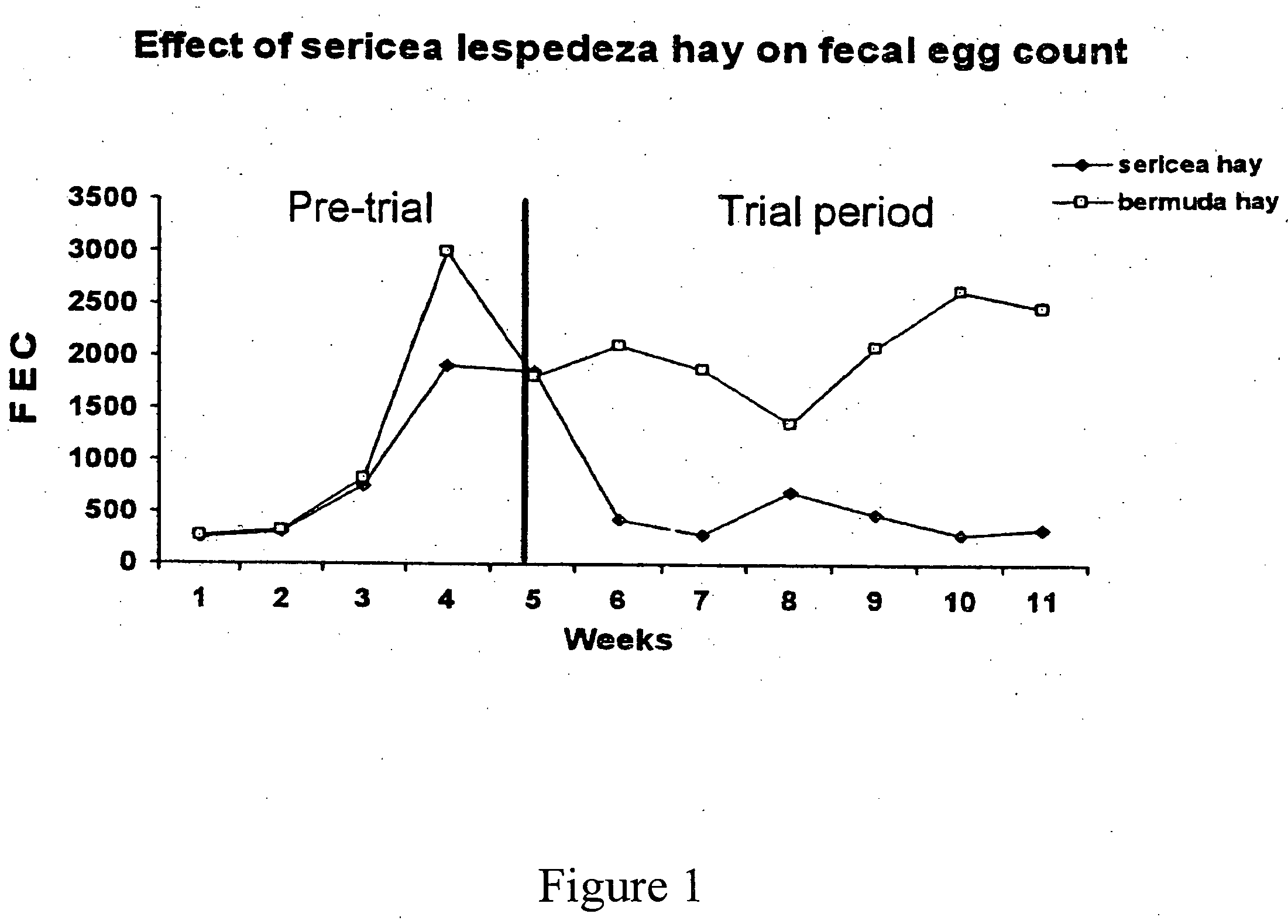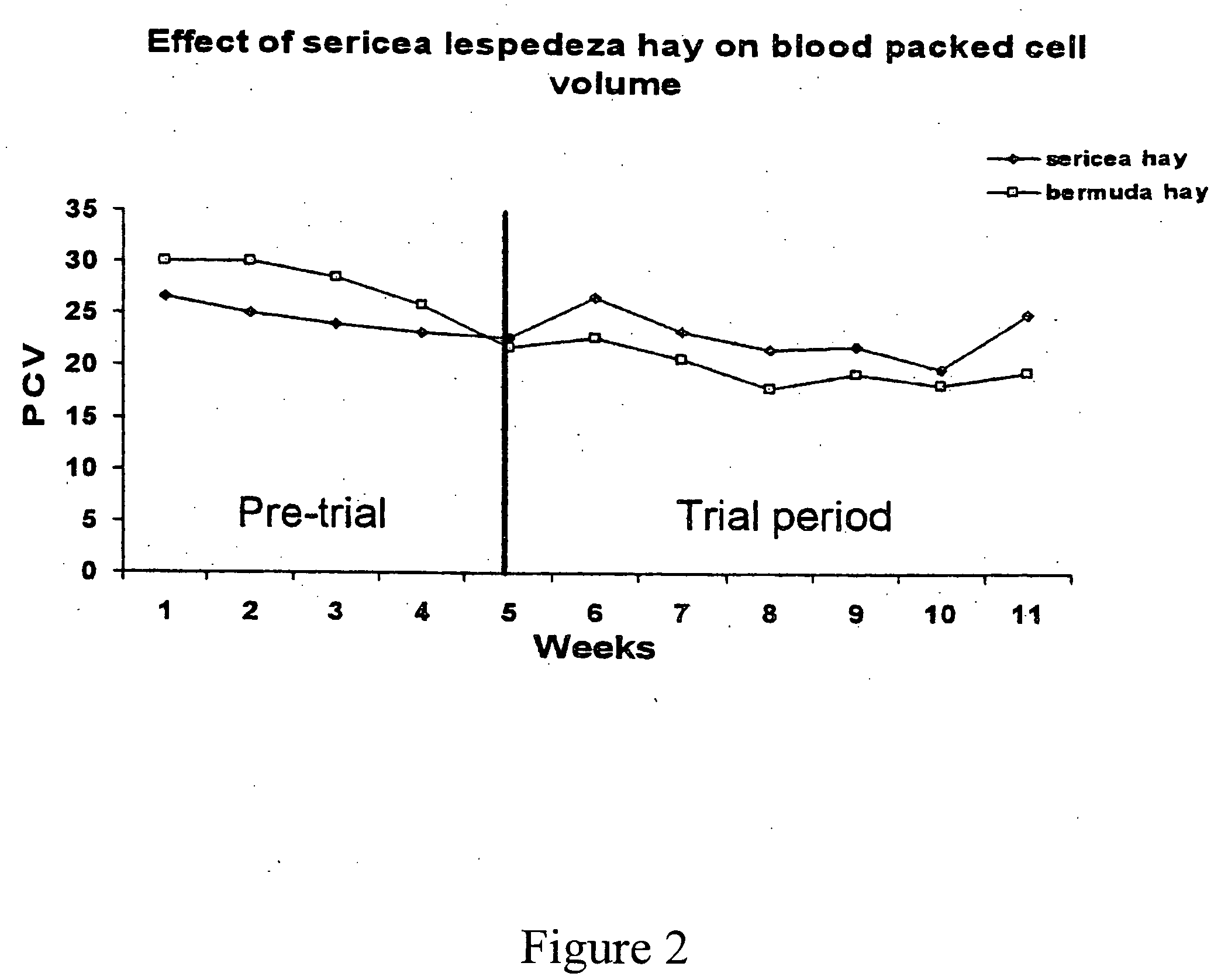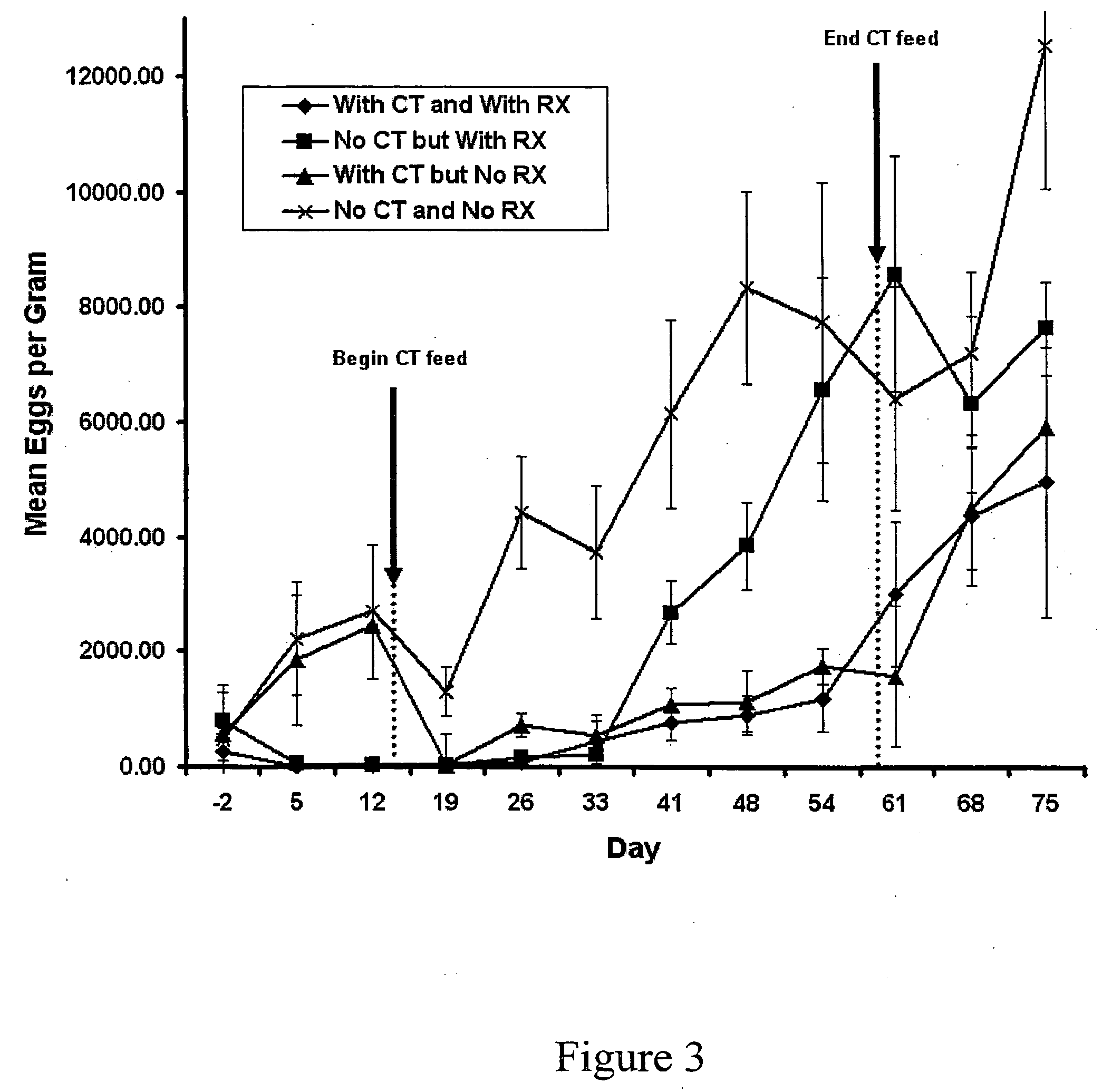Method and composition for the control of gastrointestinal parasites in animals
a technology for gastrointestinal parasites and compositions, applied in the field of controlling gastrointestinal parasitic infections in animals, can solve the problems of slow growth of the goat industry in the southern usa, economic goat production in this region is infected with gastrointestinal nematodes (gin), etc., and achieves the effects of reducing gastrointestinal nematode infections, reducing the number of infections, and improving the quality of li
- Summary
- Abstract
- Description
- Claims
- Application Information
AI Technical Summary
Benefits of technology
Problems solved by technology
Method used
Image
Examples
example 1
[0034] Introduction:
[0035] The purpose of the current study was to determine potential anthelmintic effects of feeding sericea lespedeza hay to goats.
[0036] Materials and Methods:
[0037] Twenty yearling Spanish×Boer×Kiko cross yearling does were fed two diets (n=10) consisting of primarily coarse-ground sericea lespedeza or bermudagrass hay in an 8-week confinement study. The diets were balanced for protein and energy with a small amount of supplement (ground corn, soybean mean, poultry fat, trace mineral salt and vitamin premix). The diets were approximately 80% hay and 20% supplement by weight. Prior to starting the trial, the does acquired a low-level natural GIN infection (H. contortus) by grazing native pasture for approximately 6 months. Three weeks before moving the does to the pens (2 pens of 5 animals each for each treatment), infection level of the does was boosted by a one time drench of 10,060 H. contortus larvae per animal.
[0038] Goats were assigned to treatment grou...
example 2
[0047] Introduction:
[0048] This study was conducted to evaluate the effect of the condensed tannin (CT) containing forage, sericea lespedeza (SL), fed as hay, on primarily the Haemonchus contortus worm infection in sheep.
[0049] Methods and Materials:
[0050] Design: Twenty-eight naturally infected lambs were removed from pasture and maintained in cement floored pens. Lambs were randomly allocated based on FEC to one of four treatment groups (7 animals each): Group 1) control, non-CT hay and established infection; Group 2) non-CT hay and dewormed; Group 3) CT hay and established infection; Group 4) CT hay and dewormed. Groups 2 and 4 were dewormed using levamisole and albendazole on two consecutive days (Days −1 and 0). All animals were fed non-CT hay up to Day 14 and then groups 3 and 4 began being fed sericea lespedeza CT hay and Groups 1 and 2 continued being fed non-CT hay. All animals received trickle infections of a mixed larval inoculum of 1000 L3 H. contortus larvae three ti...
example 3
[0065] Introduction:
[0066] The major advantages of hay over fresh CT forage are increased flexibility in storage and transport, as well as timing / season of feeding. The objective of the current investigation was to determine the effects of feeding SL hay on the egg, larval, and adult stages of GIN in goats fed in confinement.
[0067] Materials and Methods:
[0068] Experimental Design and Protocol:
[0069] A confinement feeding trial was conducted using 20 weaned intact Boer male goats (6-8 months old; 23±2.83 kg) at the Fort Valley State University (FVSU) Agricultural Research Station, Fort Valley, Ga. Goats were housed in 4 pens (5 animals / pen) on concrete in a covered barn with open sides. Area of each pen was 9.3 m2, with similar temperature and sunlight conditions. Prior to confinement, the animals were grazed for 4 weeks on bermudagrass (BG) pasture to allow development of a low-level GIN infection. In addition, starting 2 weeks before moving to the pens, and then for 8 weeks dur...
PUM
 Login to View More
Login to View More Abstract
Description
Claims
Application Information
 Login to View More
Login to View More - R&D
- Intellectual Property
- Life Sciences
- Materials
- Tech Scout
- Unparalleled Data Quality
- Higher Quality Content
- 60% Fewer Hallucinations
Browse by: Latest US Patents, China's latest patents, Technical Efficacy Thesaurus, Application Domain, Technology Topic, Popular Technical Reports.
© 2025 PatSnap. All rights reserved.Legal|Privacy policy|Modern Slavery Act Transparency Statement|Sitemap|About US| Contact US: help@patsnap.com



